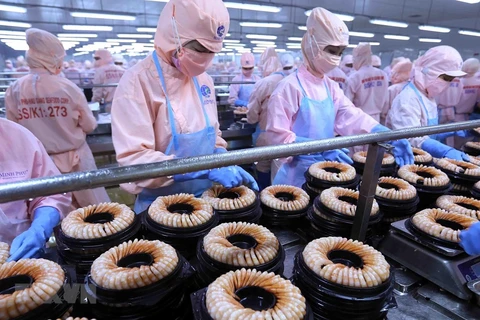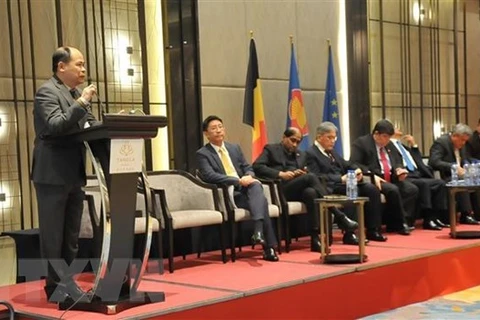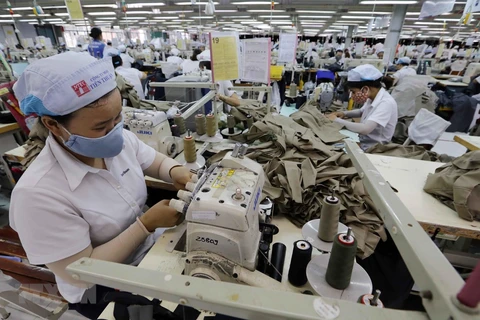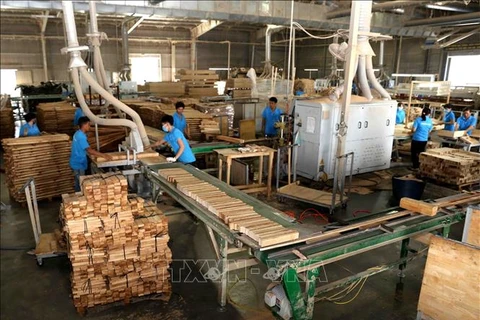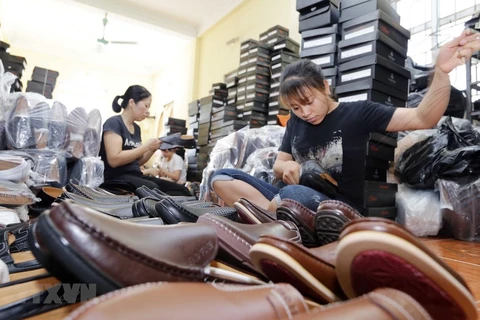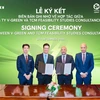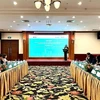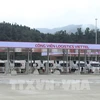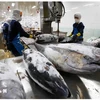Hanoi (VNA) - The EU-Vietnam Free Trade Agreement (EVFTA) is expected to put pressure on Vietnamese enterprises to increase their competitiveness in order to make inroads into the European market.
The trade deal, which is signed on June 30, is a new generation FTA with higher commitments than regulations of the World Trade Organization (WTO) on market opening, protection of intellectual property rights, labour, the environment, sustainable development, and dispute resolution.
The EU has given Vietnam some incentives in implementing EVFTA. This is both a gesture of goodwill of the EU and proof of the good relationship between the two sides.
According to Prof. Nguyen Mai, Chairman of the Vietnam’s Association of Foreign Invested Enterprises, in terms of trade and investment, the EU's commitment to Vietnam is higher than those made by the EU within the World Trade Organisation (WTO) and equivalent to the highest level of the EU in some new FTAs.
As soon as the agreement comes into effect, the EU will remove import duties for about 85.6 percent of tariff lines of Vietnam, equivalent to 70.3 percent of Vietnam's export turnover to the EU.
On the contrary, Vietnam commits to eliminate import duties for 48.5 percent of tariff lines on EU goods when the agreement takes effect, accounting for 64.5 percent of its import turnover from the bloc.
As a result, FDI enterprises, import-export firms, distributors, retailers and wholesalers in the market, including contractors, of the two sides will benefit greatly in trade and investment cooperation activities, he said.
Sharing Mai’s opinion, Pham Thi Du, lecturer from the faculty of Economics - Law of the Vietnam University of Commerce, said export enterprises expected Vietnam's exports to EU member countries to increase by 50 percent by 2020 once the EVFTA is signed and takes effect.
The trade structures of the two sides complement each other in terms of advantage and import and export demand, with only a few goods directly competing.
Vu Tien Loc, Chairman of the Vietnam Chamber of Commerce and Industry (VCCI) stressed that under the pact, the competitive edge of Vietnamese goods in the short and medium terms will rise further compared to goods of other ASEAN countries in the EU market.
Industries such as seafood; textiles; leather, footwear and bags sector will get more and more opportunities for development as nearly 90 percent of tax lines in those fields are removed.
It is also important that domestic businesses will have chances to access hi-tech equipment and techniques from EU countries, which will help increase labour productivity and better the quality of products.
The EVFTA will bring both benefits and challenges to the business community and economy of Vietnam, experts said, noting that enterprises themselves need to be take the initiative in updating information related to tariff reduction.
At the same time, they should strive to meet technical, labour and environmental requirements, while investing in renovating technology; training human resources; building and promoting brand names; seeking and setting up ties with partners in EU member nations; and strictly complying with EU regulations on trade and investment.
State agencies need to roll out policies to promote cooperation between FDI corporations and Vietnamese enterprises in order to develop the support industry, with the focus on a number of key products.
This will not only turn Vietnam into a factory of the world manufacturing many hi-tech products, but also create increasingly higher added value for domestic enterprises. -VNA
VNA


